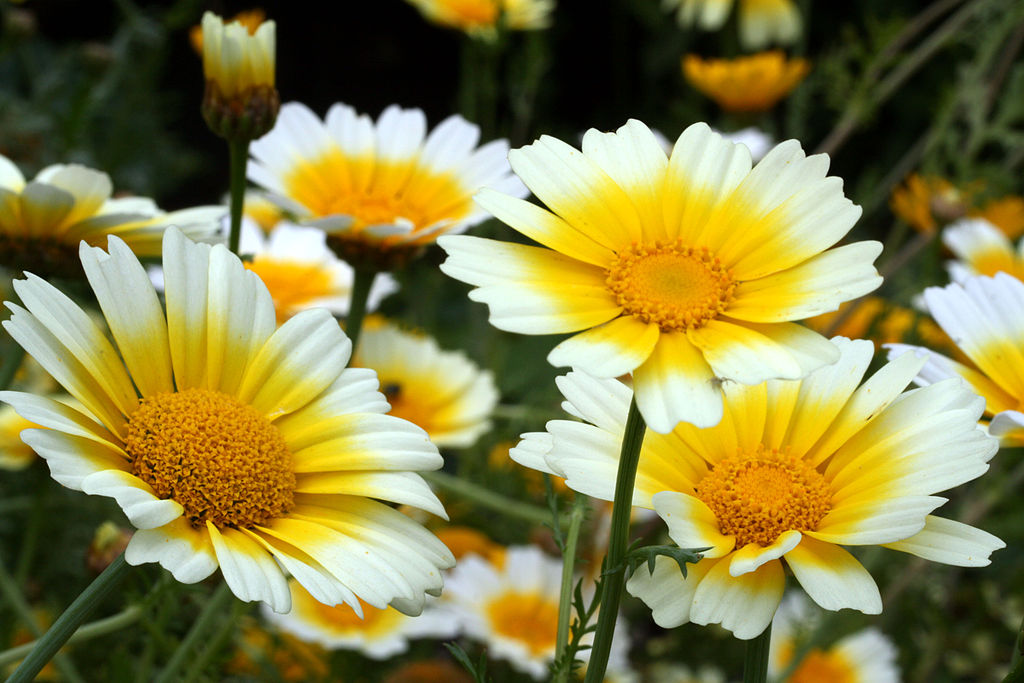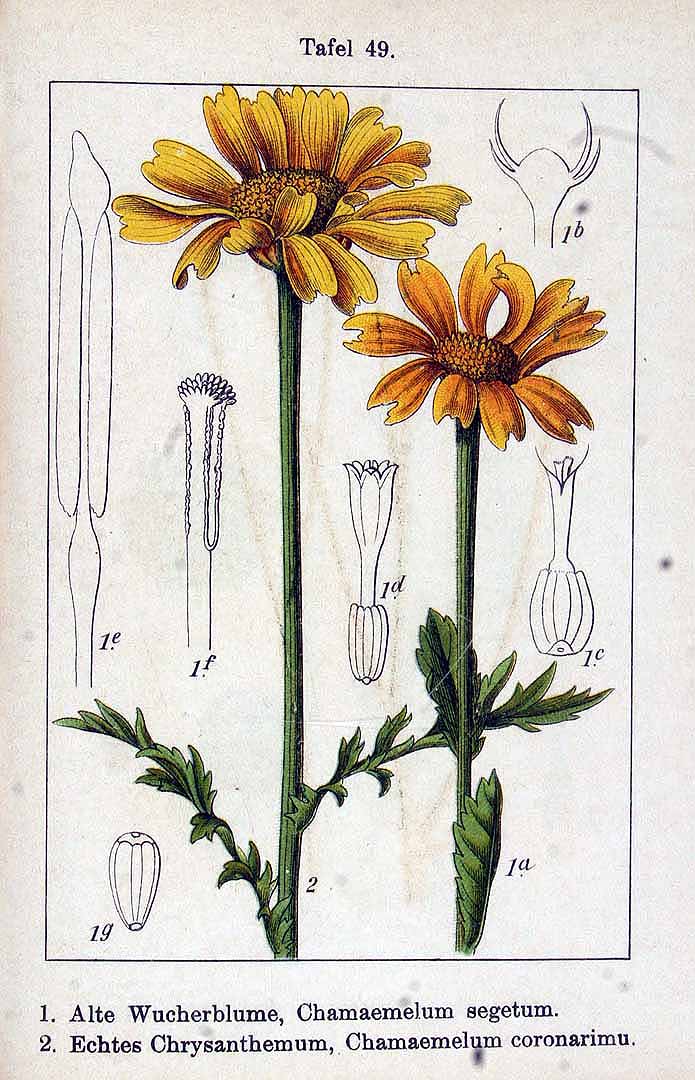! Nouveau site ici !
Vita > Plantae > Magnoliophyta > Magnoliopsida > Asterales >
Asteraceae > Glebionis
Glebionis coronaria
(Chrysanthème comestible)


 | *** - **
| *** - **
Vita > Plantae > Magnoliophyta > Magnoliopsida > Asterales >
Asteraceae > Glebionis
Glebionis coronaria
(Chrysanthème comestible)

Une herbe. Elle pousse chaque année à partir de graines. Il atteint 70 cm de haut. Les feuilles sur la tige n'ont pas de tiges. Les feuilles mesurent 8-10 cm de long sur 3-4 cm de large. Ils sont divisés. Il... (traduction automatique)
→suite
⬀
Le  donne accès au menu
donne accès au menu (c'est votre point de repère) 😊 ;
En dessous vous avez la classification, à partir de la vie (Vita, premier rang) jusqu'à la classe au dessus de la plante, dont vous trouvez ensuite le nom scientifique/botanique (latin) puis le nom commun (français), le cas échéant ;
C'est aussi un lien vers la fiche complète (tout comme la ✖, en bas à droite, et le +, en dessous de la description) ;
Vient alors l'illustration (ou ce qui la remplace, en attendant), la comestibilité :
Et en bas
⬂





